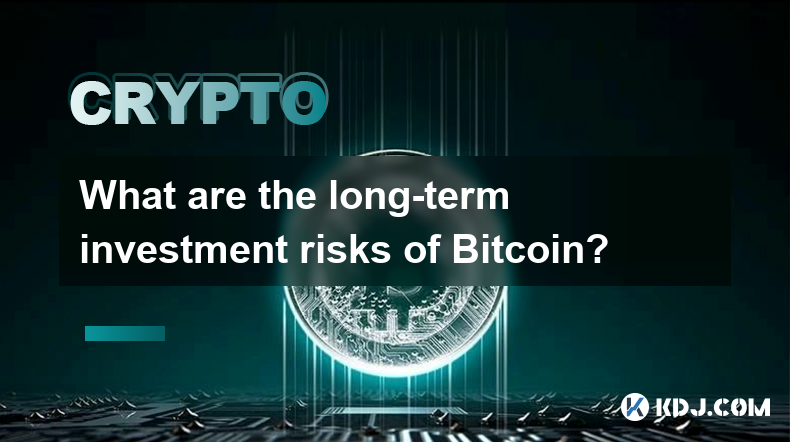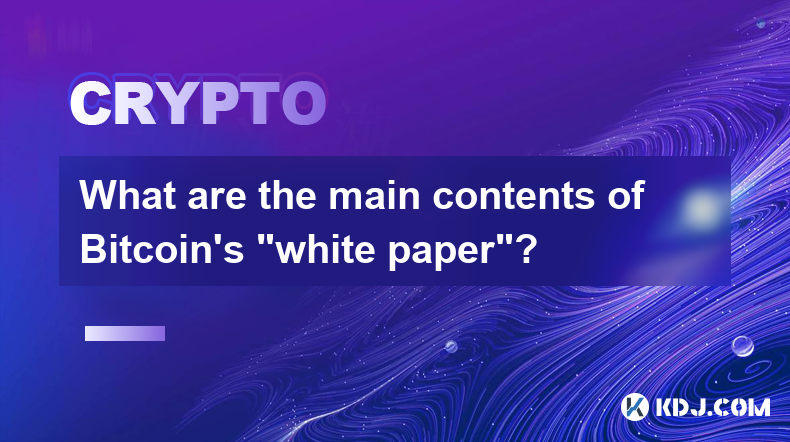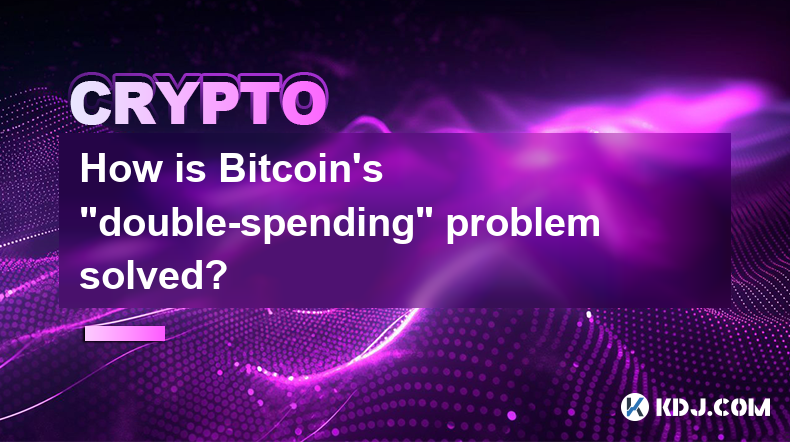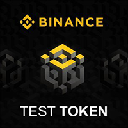-
 Bitcoin
Bitcoin $95,730.3405
-1.05% -
 Ethereum
Ethereum $2,786.4114
1.72% -
 XRP
XRP $2.5528
-1.40% -
 Tether USDt
Tether USDt $1.0001
0.02% -
 BNB
BNB $655.8219
-0.07% -
 Solana
Solana $168.8842
-2.81% -
 USDC
USDC $1.0001
0.01% -
 Dogecoin
Dogecoin $0.2438
-0.13% -
 Cardano
Cardano $0.7712
0.12% -
 TRON
TRON $0.2422
2.24% -
 Chainlink
Chainlink $17.6251
-0.05% -
 Avalanche
Avalanche $24.9664
-2.35% -
 Sui
Sui $3.3291
-1.26% -
 Stellar
Stellar $0.3293
-0.37% -
 Litecoin
Litecoin $127.0494
-0.82% -
 Toncoin
Toncoin $3.7759
3.16% -
 Shiba Inu
Shiba Inu $0.0...01556
0.74% -
 UNUS SED LEO
UNUS SED LEO $9.7350
-0.21% -
 Hedera
Hedera $0.2102
-2.39% -
 MANTRA
MANTRA $8.3819
10.43% -
 Hyperliquid
Hyperliquid $23.5518
-4.26% -
 Polkadot
Polkadot $4.9983
-1.78% -
 Bitcoin Cash
Bitcoin Cash $327.1785
2.21% -
 Bitget Token
Bitget Token $5.0142
0.14% -
 Ethena USDe
Ethena USDe $1.0003
0.09% -
 Uniswap
Uniswap $9.0701
1.63% -
 Dai
Dai $0.9999
-0.01% -
 Monero
Monero $232.6655
-0.14% -
 NEAR Protocol
NEAR Protocol $3.3785
-5.09% -
 Pepe
Pepe $0.0...09333
-1.59%
How does the altcoin redistribution system work?
Altcoin redistribution through transaction fee allocation rewards holders for participating in platform transactions, incentivizing community engagement and supporting altcoin adoption while potentially enhancing token value over time.
Dec 31, 2024 at 02:35 am

Key Points:
- Understanding the Altcoin Redistribution System: Benefits and Mechanisms
- Identifying Eligible Altcoins for Redistribution
- Quantifying Altcoin Redistribution Rates and Timing
- Exploring Current Industry Practices and Case Studies
- Analyzing the Impact on Altcoin Market Dynamics
- Potential Risks and Considerations in Altcoin Redistribution
- FAQs on Altcoin Redistribution
Comprehensive Guide to the Altcoin Redistribution System
In the dynamic cryptocurrency landscape, the concept of altcoin redistribution has emerged as a key strategy for diversifying portfolios and maximizing potential returns. This article will delve into the inner workings of the altcoin redistribution system, exploring its mechanisms, benefits, and implications for investors.
Understanding the Altcoin Redistribution System
Altcoin redistribution refers to a strategy employed by certain digital asset platforms or exchanges to distribute a portion of the platform's or exchange's profits or transaction fees back to holders of specific altcoins. The primary objective is to incentivize the holding of these altcoins, enhance their value, and promote adoption within the cryptocurrency ecosystem.
Benefits of Altcoin Redistribution
- Passive Income Generation: Holders of eligible altcoins can earn passive income in the form of additional altcoins, increasing their token holdings over time.
- Market Promotion: Altcoin redistribution serves as a form of marketing for the underlying altcoin, increasing its visibility and appeal among investors.
- Community Building: By incentivizing altcoin holding, redistribution fosters a stronger community around the altcoin and promotes its long-term sustainability.
Mechanisms of Altcoin Redistribution
- Transaction Fee Redistribution: Some exchanges allocate a percentage of their transaction fees to altcoin holders, proportionally distributing the rewards based on the amount of altcoins held.
- Platform Revenue Redistribution: Platforms may generate revenue through various mechanisms, such as trading fees, advertising, or staking rewards. A portion of these revenues can be allocated to altcoin redistribution.
- Fixed Rate or Dynamic Rate Allocation: The rate of altcoin redistribution can be fixed, ensuring a set amount of rewards regardless of platform performance. Alternatively, the rate can be dynamic, fluctuating based on factors such as platform revenue or trading volume.
Identifying Eligible Altcoins
Not all altcoins are eligible for redistribution. Typically, eligible altcoins must meet specific criteria, such as:
- Listing on the Relevant Platform: Altcoins must be listed on the exchange or platform that offers the redistribution program.
- Compliance with Redistribution Rules: Altcoins must adhere to the platform's redistribution requirements, such as minimum holding periods or trading activity.
- Active Development and Community: Altcoins with active development teams and engaged communities are more likely to be eligible for redistribution.
Quantifying Altcoin Redistribution Rates and Timing
The rate of altcoin redistribution can vary significantly depending on the platform or exchange. Factors such as the platform's profitability, the number of eligible altcoins, and the total supply of the altcoin influence the distribution rate.
Similarly, the timing of altcoin redistribution is platform-specific. Some platforms distribute rewards on a regular basis, such as weekly or monthly, while others may distribute rewards only when certain conditions are met or when the platform reaches a predetermined revenue milestone.
Exploring Current Industry Practices and Case Studies
Several cryptocurrency platforms and exchanges have implemented altcoin redistribution systems. Some notable examples include:
- Binance's BNB Redistribution: Binance, a leading cryptocurrency exchange, allocates a substantial portion of its quarterly profits to BNB holders.
- KuCoin's KCS Redistribution: KuCoin distributes a portion of its trading fees to KCS holders, enhancing the value of its native token.
- BitMax's BTMX Redistribution: BitMax offers a flexible redistribution system that allows holders to vote on the allocation of platform revenues to specific altcoins.
Analyzing the Impact on Altcoin Market Dynamics
Altcoin redistribution can have a significant impact on the market dynamics of the eligible altcoins.
- Increased Demand and Trading Volume: The prospect of earning passive income through redistribution can increase demand for eligible altcoins, leading to higher trading volume.
- Price Appreciation: As demand for eligible altcoins increases, their market price tends to appreciate, providing holders with potential capital gains.
- Enhanced Token Value: Regular redistribution of altcoins effectively reduces the overall supply of the token, enhancing its value over time.
Potential Risks and Considerations in Altcoin Redistribution
- Platform Risk: The reliability and financial stability of the platform or exchange offering altcoin redistribution are critical factors to consider.
- Tax Implications: Depending on the jurisdiction, altcoins distributed as rewards may be subject to capital gains tax or other tax liabilities.
- Dependence on Platform Performance: The value of altcoins distributed through redistribution is directly tied to the performance of the platform or exchange.
FAQs on Altcoin Redistribution
What are the most common mechanisms used for altcoin redistribution?
- Transaction fee redistribution
- Platform revenue redistribution
- Fixed rate or dynamic rate allocation
How do I determine if an altcoin is eligible for redistribution?
Check the platform's or exchange's website or announcement channels for details on eligible altcoins.
What factors influence the rate of altcoin redistribution?
- Platform profitability
- Number of eligible altcoins
- Total supply of the altcoin
How does altcoin redistribution affect the market dynamics of the eligible altcoins?
- Increased demand and trading volume
- Price appreciation
- Enhanced token value
Disclaimer:info@kdj.com
The information provided is not trading advice. kdj.com does not assume any responsibility for any investments made based on the information provided in this article. Cryptocurrencies are highly volatile and it is highly recommended that you invest with caution after thorough research!
If you believe that the content used on this website infringes your copyright, please contact us immediately (info@kdj.com) and we will delete it promptly.
- Celestia (TIA) Price Struggles to Gain Momentum – Analyst Warns of Possible Downside Ahead
- 2025-02-23 21:10:26
- Astrological Signals Worry the Crypto Community
- 2025-02-23 21:10:26
- Bitcoin (BTC) Shows Signs of Strength as Buyers Step In, Can the Momentum Be Sustained?
- 2025-02-23 21:10:26
- BTFD Coin – The Meme Coin Revolution With a P2E Twist
- 2025-02-23 21:05:26
- Ethereum (ETH) Price Holds Within a Consolidation, Signals Possible Trend Reversal
- 2025-02-23 21:00:27
- ChowWow ($CHOW): A New Crypto ICO Project That Rewards Token Holders with Its Staking Platform
- 2025-02-23 21:00:27
Related knowledge

What are the long-term investment risks of Bitcoin?
Feb 22,2025 at 05:30pm
Key PointsVolatility and price fluctuationsRegulatory uncertaintySecurity risksCompetition from altcoinsMarket manipulation and scamsTransaction feesEnvironmental concernsLong-Term Investment Risks of BitcoinVolatility and Price FluctuationsBitcoin's high volatility is a double-edged sword. While it has the potential to generate substantial returns, it ...

What are the main contents of Bitcoin's "white paper"?
Feb 21,2025 at 04:36am
Key Points:Understanding Bitcoin's Genesis: The White Paper's IntroductionA Decentralized Digital Currency: Bitcoin's Core ConceptBlockchain Technology: The Foundation of Bitcoin's Immutable LedgerProof-of-Work: Securing Bitcoin's NetworkThe Design of Bitcoin's Currency: Issuance, Scarcity, and DivisibilityBitcoin's Potential Applications and Future Pro...

How does Bitcoin's distributed ledger ensure consistency?
Feb 22,2025 at 10:06pm
Key Points:Bitcoin employs a distributed ledger, also known as a blockchain, to maintain a tamper-proof and consistent record of transactions.The blockchain is a decentralized network of computers that collectively validate and store transaction data.Bitcoin's distributed ledger ensures consistency through consensus mechanisms and cryptographic algorith...

What does the Cryptographic Fundamentals of Bitcoin consist of?
Feb 21,2025 at 12:06pm
Key PointsUnderstanding the cryptographic algorithms used in BitcoinFamiliarization with the Bitcoin blockchain and its underlying mechanicsExamination of the security measures that protect Bitcoin from attackAnalysis of the decentralized nature of Bitcoin and its implicationsDiscussion of the scalability and transaction fee issues associated with Bitco...

What is Bitcoin's relationship with blockchain technology?
Feb 22,2025 at 07:00pm
Bitcoin's Intertwined Relationship with Blockchain TechnologyKey Points:Definition of blockchain technology and its decentralized natureBitcoin's utilization of blockchain for secure and immutable transactionsThe role of blockchain in verifying and confirming transactionsEvolution of blockchain technology beyond Bitcoin's cryptocurrency applicationsUnde...

How is Bitcoin's "double-spending" problem solved?
Feb 23,2025 at 02:54am
Key Points:The double-spending problem refers to the potential for a digital currency transaction to be reversed, allowing the same funds to be spent multiple times.Bitcoin solves this problem through the use of a decentralized blockchain, a public ledger that records all transactions permanently and securely.The immutability and transparency of the blo...

What are the long-term investment risks of Bitcoin?
Feb 22,2025 at 05:30pm
Key PointsVolatility and price fluctuationsRegulatory uncertaintySecurity risksCompetition from altcoinsMarket manipulation and scamsTransaction feesEnvironmental concernsLong-Term Investment Risks of BitcoinVolatility and Price FluctuationsBitcoin's high volatility is a double-edged sword. While it has the potential to generate substantial returns, it ...

What are the main contents of Bitcoin's "white paper"?
Feb 21,2025 at 04:36am
Key Points:Understanding Bitcoin's Genesis: The White Paper's IntroductionA Decentralized Digital Currency: Bitcoin's Core ConceptBlockchain Technology: The Foundation of Bitcoin's Immutable LedgerProof-of-Work: Securing Bitcoin's NetworkThe Design of Bitcoin's Currency: Issuance, Scarcity, and DivisibilityBitcoin's Potential Applications and Future Pro...

How does Bitcoin's distributed ledger ensure consistency?
Feb 22,2025 at 10:06pm
Key Points:Bitcoin employs a distributed ledger, also known as a blockchain, to maintain a tamper-proof and consistent record of transactions.The blockchain is a decentralized network of computers that collectively validate and store transaction data.Bitcoin's distributed ledger ensures consistency through consensus mechanisms and cryptographic algorith...

What does the Cryptographic Fundamentals of Bitcoin consist of?
Feb 21,2025 at 12:06pm
Key PointsUnderstanding the cryptographic algorithms used in BitcoinFamiliarization with the Bitcoin blockchain and its underlying mechanicsExamination of the security measures that protect Bitcoin from attackAnalysis of the decentralized nature of Bitcoin and its implicationsDiscussion of the scalability and transaction fee issues associated with Bitco...

What is Bitcoin's relationship with blockchain technology?
Feb 22,2025 at 07:00pm
Bitcoin's Intertwined Relationship with Blockchain TechnologyKey Points:Definition of blockchain technology and its decentralized natureBitcoin's utilization of blockchain for secure and immutable transactionsThe role of blockchain in verifying and confirming transactionsEvolution of blockchain technology beyond Bitcoin's cryptocurrency applicationsUnde...

How is Bitcoin's "double-spending" problem solved?
Feb 23,2025 at 02:54am
Key Points:The double-spending problem refers to the potential for a digital currency transaction to be reversed, allowing the same funds to be spent multiple times.Bitcoin solves this problem through the use of a decentralized blockchain, a public ledger that records all transactions permanently and securely.The immutability and transparency of the blo...
See all articles




















































































